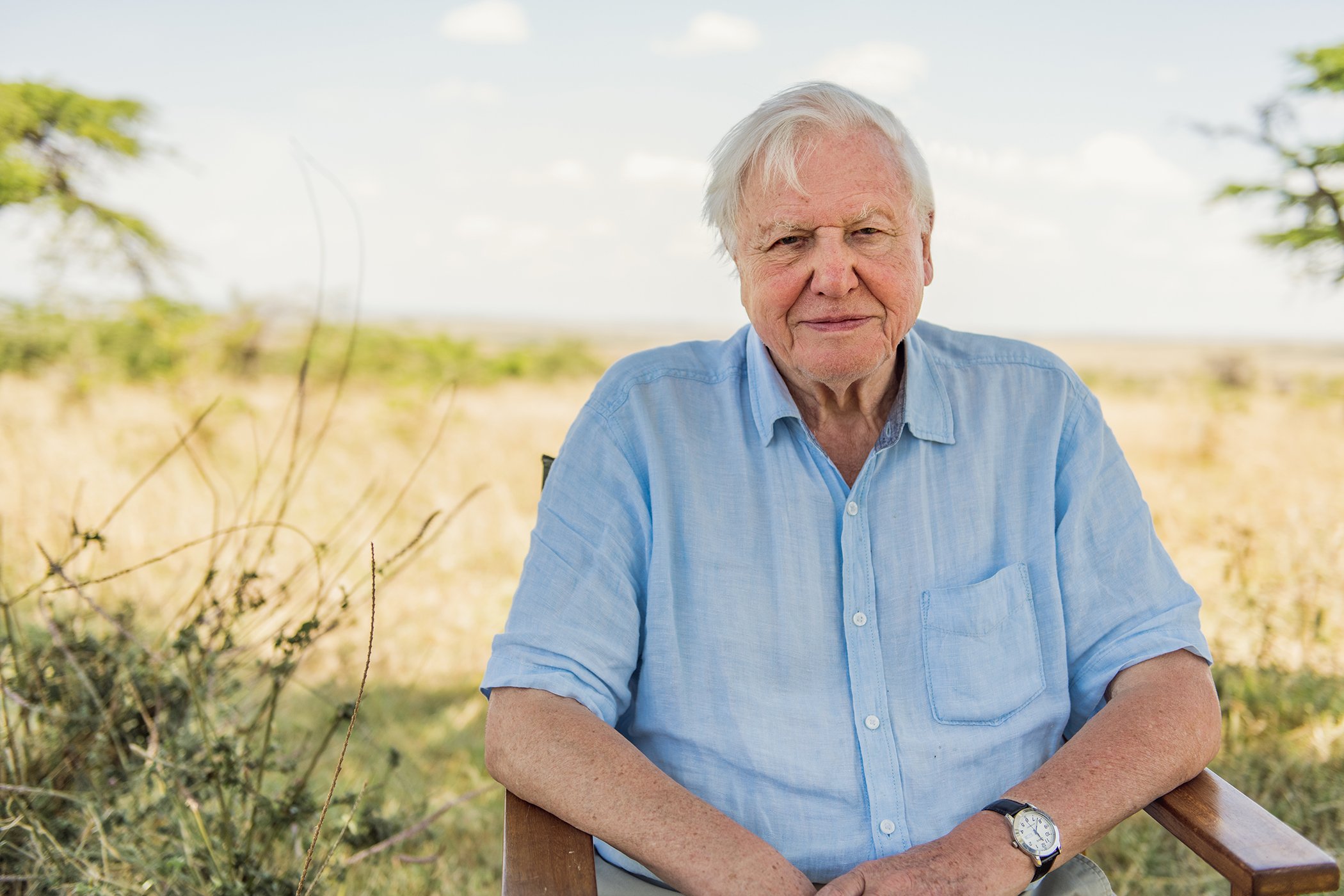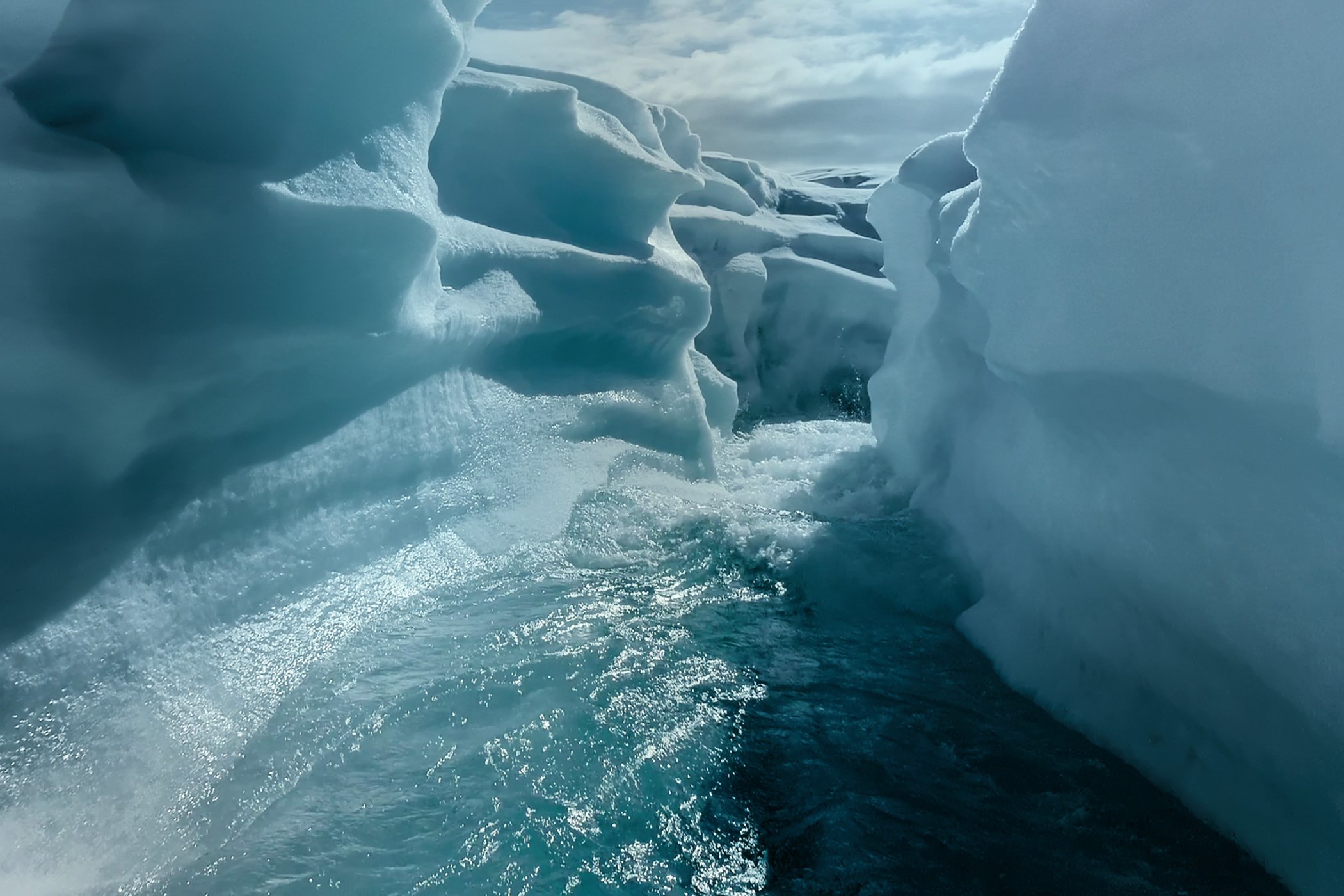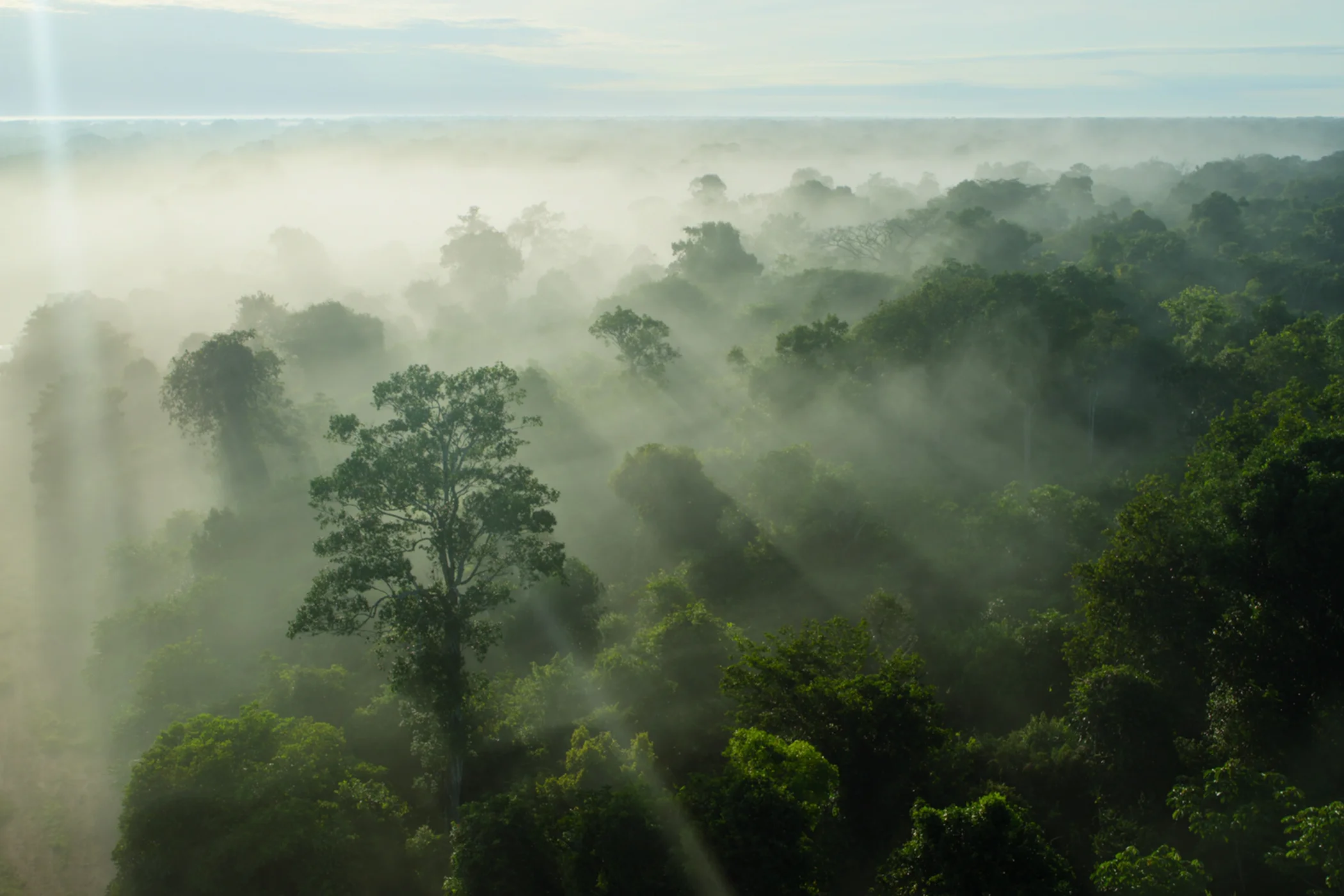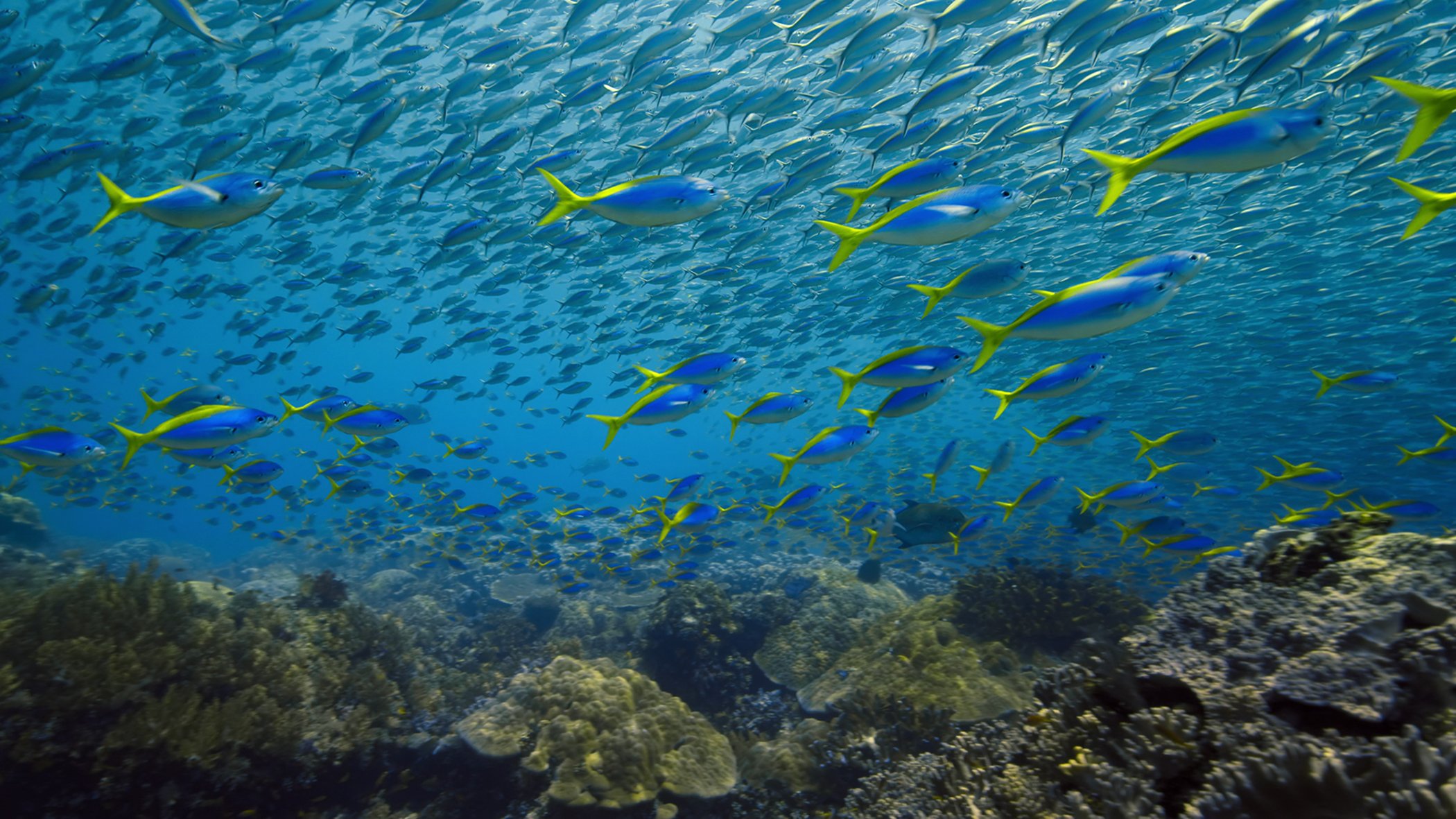The latest eye-opening documentary about climate change from naturalist and climate advocate Sir David Attenborough is causing a storm on Netflix.
From the devastating ecological damage of the wild fires and coral reef bleaching in Australia to the importance of tree planting for sustainable development, the film is packed full of scientific data.
And it's neatly broken down into easy-to-understand sections, making Breaking Boundaries: The Science of Our Planet essential viewing.
Brace yourself though, it’s a tough watch. But although the detail on how our planet has been harmed is heart-breaking, the show does include some clear — and feasible — steps for changing course.
Tracking Swedish environmental scientist Professor Johan Rockström's theory of what he calls “planetary boundaries” throughout, Attenborough charts the so-called “tipping points” of each of the natural systems that allow the world to function — atmosphere, biosphere, water resources — and explores what might happen after they are damaged beyond a certain point.
So for World Oceans Day on Tuesday, we pulled together some of the important things we learned from what Rockström, Attenborough, and the other experts had to say.
 Sir David Attenborough pictured in the Maasai Mara, Kenya.
Sir David Attenborough pictured in the Maasai Mara, Kenya.
Sir David Attenborough pictured in the Maasai Mara, Kenya.
1. The world has only had a stable climate for the past 10,000 years — and civilization has depended on it
While researchers have collected ice cores to allow them to track world temperatures across the past 100,000 years, the world’s mean average temperature has only varied by 1 degree Celsius, up or down in the last 10,000 years.
What’s remarkable is that for the majority of that period the climate was unstable, jumping between ice ages and swelteringly hot periods.
This period of climate stability has been labelled the “Holocene” by geologists and it is credited, in no small part, with supporting the development of human civilisation as we know it.
It meant that humans could develop agriculture reliant on predictable seasons and weather, and it includes features such as two permanent ice caps that cool the world, plus stable sea temperatures that have allowed life to flourish.
2. Now we are living in the Anthropocene
But the age of the Holocene is over.
In 2016 scientists declared that, as of about 1950, we had moved into a new geographical era, called the “Anthropocene” age, Attenborough explains. This new period can be defined by the impact of humans on the world, which is changing the climate once more, as opposed to such a change being prompted by nature.
Attenborough explains how the finely tuned natural systems that Earth benefits from will become highly unstable after a certain point of warming and that will start to work against humans in the battle to keep carbon emissions out of the atmosphere.
Just one example is that if forests die out, we won’t benefit from how trees take carbon dioxide out of the air, which will in turn accelerate warming. He says we’re in a moment where the planet is “still our friend” when it comes to supporting us, but it could soon become “our foe.”
3. We really need ice caps

As well as being home to majestic wildlife such as Emperor penguins and polar bears, the two permanent ice caps in the Arctic and Antarctica are crucial to our stable and moderate world temperature.
The ice caps are made up of thousands of miles of ice sheets that reflect back the sun’s light, helping to cool the world. But the more of the ice that is lost, the risk of even more warming increases.
Sea levels could rise by seven metres if we lose Greenland’s ice sheet in the north pole and if we lost all of Antarctica’s ice, sea levels would rise by a disastrous 50 metres.
4. The Amazon rainforest is getting... dry
We've long known that the Amazon rainforest — aka one of the planet’s “largest remaining wildernesses”— is being destroyed but here the devastating impact on climate change is made crystal clear.
It's losing its ability to make rain.
Dr. Carlos Nobre, a Brazilian meteorologist who has been studying the rainforest for decades. Nobre has been conducting a pioneering experiment since 1998, collecting data from tall outposts dotted around the Amazon. He has found that as large swathes of the forest have been cleared [Attenborough says close to 20% has been lost already], the remaining forest has been affected.
As the surface of forest has reduced and fragmented, it is losing its ability to recycle its own rain and is therefore being hit by dry seasons — “rain” and “forest” being the operative terms here.
That means some of the trees are dying off and there are signs that some parts of the Amazon will become grassy savannas, even without it being cleared by humans.
But as we know, we need that tree cover, for all sorts of reasons, not least because it stores carbon. Nobre says the Amazon, if destroyed, could release 200 billion tons of carbon over the next 30 years.

5. Bumblebee 'theft' once caused an international spat
British scientists upset Sweden by travelling there in 2012 to collect short-haired bumblebees, so that they could release them back in the UK.
The plan was for conservationist organisations including Natural England and the Royal Society for the Protection of Birds (RSPB) to take 100 of the queen bees back to the UK to revive the population there — as short-haired bumblebees had not been seen since the 1990s.
They were apparently allowed to do so, but Swedish newspapers were in uproar. One argued, according to a BBC news report at the time, that: “If they take 100 queen bees from here, there is a big risk that we end up in the same situation as the UK, that it becomes extinct."
Rockström said that this incident was just one example of how desperate the impact of species extinction can be. “Here we have a country that feels forced to go to another country to steal pollinators to help its own agriculture… that was a moment where I thought ‘this is serious.’”
The humble bumblebee are extraordinarily valuable insects to a functioning crop-growing agricultural system due to their ability to pollinate and improve the health of plants.
6. Coral reef decimation is one of the saddest parts of the climate crisis

Australian scientist professor Terry Hughes, a leading expert in coral reefs, broke down in tears when he was interviewed for the documentary.
He has personally witnessed the bleaching of the Great Barrier Reef — which occurs when warm water or pollution causes the coral to drive out algae, causing it to lose all its colour — three times in the past five years, which he described as “very confronting.”
Bleaching events used to happen only rarely, which meant the coral had time to recover.
Coral reefs bleach when they get too warm, and they can then die very quickly, Hughes explains. Half the Great Barrier Reef’s corals have already died. “You can see a bleached reef from kilometres away because it virtually glows, there’s so much white coral on it,” he says.
Ocean water acidification is another major concern to do with water temperature that scientists discussed in the documentary — but it is little known compared to other environmental issues. Attenborough says that in the past few decades, the world’s oceans have become 26% more acidic, which has been shown to kill marine life.
7. One person needs about 3,000 litres of fresh water a day to live
If this sounds improbable, Rockström breaks it down: while we only need 50 litres for drinking and hygiene, and around 100 more for washing clothes and so on, around 2,500 litres is needed to produce the food we eat every day.
But ingredients used for fertilizer in agriculture, such as phosphorus,are now destroying the water we also need to grow crops.
Unused fertilizer runs off the fields, enters waterways and kills wildlife — Rockström gives the example of the Baltic Sea which used to contain high quantities of cod, but now contains none because of fertilizer pollution from surrounding fields.
8. The Australian wildfires and COVID-19 were a wake-up call
Millions of animals and plants were killed off during 2020’s unprecedented wildfires in Australia,described as a climate change “wake up call” by Attenborough.
The documentary crew visits Kangaroo Island, off the south coast of Australia. They speak to Daniella Teixeira, a scientist who is studying glossy black cockatoos, and capture her heartbreaking visit to where they once nested — now totally destroyed by bushfires.
Meanwhile, Attenborough explains that infectious diseases that come from animals such as what reportedly caused the COVID-19 pandemic, was a sign of an “unhealthy planet” and should serve as another wake-up call for governments and society about why it’s important to protect nature.
Rockström said: “COVID-19 has made everyone understand that something can go wrong on the other side of the planet and it can immediately impact all our lives somewhere else.”
9. There’s still hope
The documentary highlights how nations rallied back in the 1980s to stop using the chlorine-based chemicals that were depleting the ozone layer in the southern hemisphere.
Attenborough explains that this is an example of governments acting on a threat, and shows what can still be done to stop the climate crisis today.
Rockström points out that the world has already warmed by 1.1 degrees above pre-industrial levels, and to keep it at no warmer than 1.5 degrees, we need a fossil fuel free economy in the next 30 years.
That means this next decade is crucial: if we steadily cut our emissions by half every year, the world will be able to reach its targets.
Meanwhile, he says major tree planting efforts can help in a myriad of ways, halting soil erosion, and helping to remove carbon dioxide from the atmosphere.
A flexitarian diet, and eating less red meat, for example, is also key. “Eating healthy food might be the most effective way to help save the planet,” Rockström says.
Finally Attenborough explains that moving towards a circular economy — where resources are renewed instead of constantly having to be created from scratch — will help enormously to take the pressure off the planet’s natural systems.
“The future is not determined, it is in our hands,” he says.